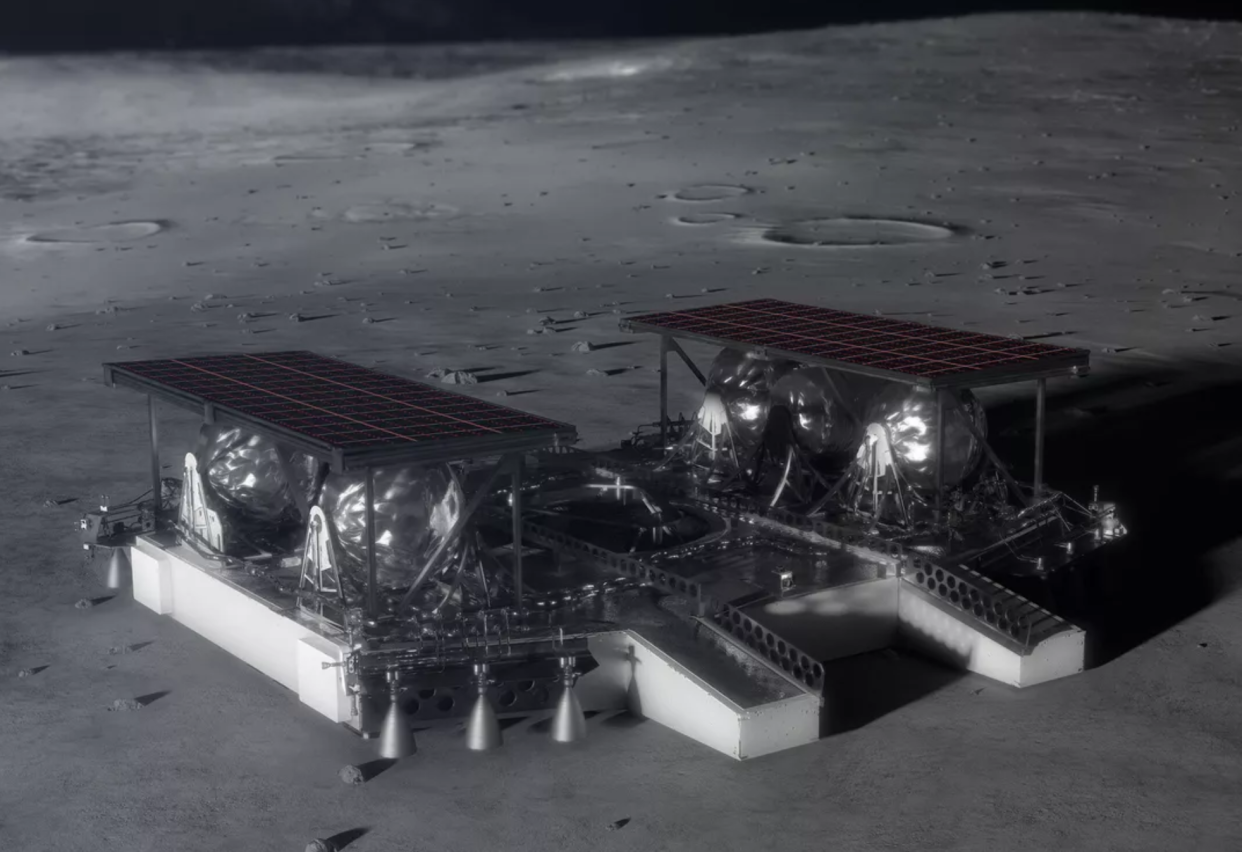NASA unveils lunar lander as it aims to put astronauts on the moon by 2024

NASA has unveiled a vision of its future moon lander, part of an ambitious plan to put astronauts on the moon by 2024.
The mid-sized lander would be used to deliver a 300kg rover to one of the moon’s poles, and would travel on a commercial space launch.
The American space agency describes the spacecraft as a "pallet lander concept", and admits that the lander is not intended to survive the lunar night.
READ MORE
Binary Earth-sized planets possible around distant stars
Insects could die out in ‘worst exctinction since the dinosaurs’
NASA satellite captures incredible beauty of UK seen from space
Why Iran’s nuclear escalation goes unchallenged
NASA flew six manned missions to the surface of the moon, beginning with Neil Armstrong and Buzz Aldrin in July 1969, up to Gene Cernan and Jack Schmitt in December 1972.
NASA administrator Jim Bridenstine said earlier this year: “For the first time in over 10 years, we have money in this budget for a return to the Moon with humans.”
"This lander was designed with simplicity in mind to deliver a 300 kilogram rover to a lunar pole," said Logan Kennedy, the project's lead systems engineer.
"We used single string systems, minimal mechanisms and existing technology to reduce complexity, though advancements in precision landing were planned to avoid hazards and to benefit rover operations.
"We keep the rover alive through transit and landing so it can go do its job.
"As robotic lunar landers grow to accommodate larger payloads, simple but high-performing landers with a contiguous payload volume will be needed.
"This concept was developed by a diverse team of people over many years and meets that need.
"We hope that other lander designers can benefit from our work."
The move comes as the space agency races to meet an accelerated return to the moon, which President Donald Trump's administration has set for 2024.
NASA wants to establish a "sustainable human presence on the moon by 2028" in a bid to discover new scientific discoveries and demonstrate new technological advancements, with the help of private companies to build a lunar economy.

 Yahoo News
Yahoo News 

